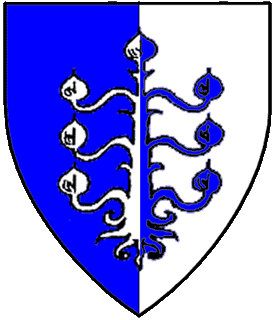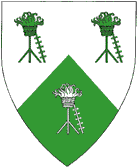|
|

Newsletter of the College of Heralds of An Tir
Volume 3, Number 4 ~ August 31, 2004
Long live King Thorin and Queen Dagmaer!
|
|
Table of Contents:
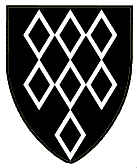
If you are familiar with the Known World Handbook you will know of an article called something like "Ruritanian Purple Feathers and Other Problems of Documentation" by Audelindis de Rheims and Caterina da Monticello. That is a lovely article outlining the pitfalls of documentation using sources far from primary, and how often sources are completely incestuous, drawing their 'facts' from the same source, which might or might not have much or any basis in fact. As heralds, we now have an even more accessible source of misinformation - the internet. Some web pages are so unusable that the Academy of Saint Gabriel has published a warning about them ( http://www.s-gabriel.org/names/arval/badpages.shtml). Conversely, any page linked directly from http://www.sca.org/heraldry/ may be considered to have been checked for accuracy by Laurel's staff and therefore safe to use. But inevitably when researching a name, we heralds or our clients will come up with a page that has not been reviewed in print by either the Academy of Saint Gabriel or Laurel's staff, and now we need to figure out whether we're doing our clients a favor or a disservice by using it.
Master Daniel de Lincolia, Clerk to Laurel Sovereign of Arms under Master François, wrote a missive concerning the use of web sites as documentation for SCA names and has graciously given his permission for an edited version to be published in the Heralds' Page.
This article is not intended to be an indictment of the website in question, only a critical look at it as an example of a source useful or not for SCA documentation. Note that Master Daniel resorted to SCA standard sources in the end, a course most of us seem to take whenever possible. Remember that Æstel Herald and the heralds' mailing lists are available to help you document from standard sources if you do not have your own copies. We're a College, we work together to benefit us all.
Any editing of the following was done to hopefully align the finished product with Master Daniel's intention of informational content. Any inaccuracies in achieving this goal are wholly the fault of the editor, Lady Teceangl Bach, who takes full responsibility for anything she might have messed up. We hope it will be of use. -Ed.
by Master Daniel de Lincolia, OP
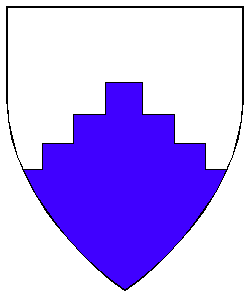
The question relates to documenting a certain name to period. The questioner queried: "So, if this Henry Champernowne is not protected, could I use this one web page as my documentation?"
The flip response: If I can point to a Web page that says that there are flying purple lemmings in Provence, could you get it accepted as documentation?
The informational response:
Documentation is not mysterious. It's just the common-sense question: is there reason to believe any assertions there? Do we know anything about the general accuracy of the author? Does he have any reputation, whether good or bad? Does he list his sources, that we can check the fact in question? Are there any other facts there that we can check? (That is, we may not have the ability to check the one assertion that we do care about, but if we can check twenty random assertions and find that he's wrong on eight of them, for example, we know to get a stack of grains of salt to take his assertions with.)
Just looking at that page alone, we have no evidence that any assertion there is true. The author has no reputation that I know of. There are absolutely no sources listed there. The source of his assertions could be anything from direct Divine revelation to his astrologer.
If I poke around on the pages, I find his Database link at http://www.uk-genealogy.org.uk/Database/wc_toc.htm. He says:
My database is based on many hours of research through numerous resources (see the Books and Documents section for a list), but mainly the Herald's Visitations of Devon, Dorset, Cornwall, Somerset, Wiltshire, and Gloucestershire; Burke's Peerage, Burke's Landed Gentry, Glover's History of Derbyshire, John Hutchins' The History and Antiquities of the County of Dorset, and family documents. A large portion is also attributed to my grandfather's sterling work visiting hundreds of Parish churches.
Most of the information on the Cornish family, and some on the Floyer family, in particular the pictures, has been very kindly provided by Tim Sandberg, to whom I am indebted. Some of the information on the Codrington family has been very kindly provided by Christopher M Codrington. Research continues on this family, especially the West Indian branch. Some of the information relating to the Bulteel family has been very kindly provided by Vivien Allen, to whom I am greatly indebted. I am also grateful to Brenda Cox for a large proportion of the Cox, Pennell, Follet, Carrington entries and allied lines.
So we still have no reason to believe the Web page.
The evidence might be from period heraldic visitations. If it had been copied from period manuscripts, it would be evidence of the first water (perhaps literally, if your ancestry to Adam were established). On the other hand, it might be the unsupported assertion of one Mr. Tim Sandberg. Most of the sources listed are extremely dodgy or at best questionable (I wouldn't bet on Burke's anything, or on a local history).
I would say that a printout of this Web page would best be used as kindling. Its only value is as an indication of possible directions for future research, if you feel so minded.
The existence of the name Henry in period England is immediately obvious to anyone who knows its history (Henry I thru VIII, Henry Percy, any number of Henries). You can get a firm citation from Withycombe, who does have a good reputation (because we can and have checked her sources and what she says on English given names fits other evidence we've seen).
Champernowne is harder. Reaney and Wilson, 3rd ed. (also an excellent reputation), list it only as a header name. The only citations they give are for de Campo Arnulfi (1172), de Cambernof (1189-99), and de Chaumbernum (1230), deriving it from Cambernon (undated) in La Manche. If you want to be from the 1100s or 1200s in France or England, I suggest those spellings. If you want it later, especially in England, you have to look further.
Daniel de Lincolia, OP
Per chevron embattled argent and azure
Incidentally, the initial question was that since the herald found the name in the exact form the client wanted it, was it still registerable or was the recorded owner of the original name protected. The answer is that only important historical personages are so protected (Administrative Handbook section III.A.3.) and if the name or person is not found in "standard references such as an encyclopedia", the name is not protected. In practice this has meant the latest paper Encyclopedia Britannica (paper because online has so much space to spare it includes some pretty obscure stuff), websites dedicated to the person, entries in Butler's Lives of the Saints, and other well-known accessible references. Also if half the people you know recognize the name from popular culture, it probably will be protected. But not every recorded name from history is, or should be, protected, so a little research and knowledge of the Administrative Handbook rules will help you sort it out.
expounded by Lady Teceangl Bach, Ounce Herald

Four letters of heraldic administrative action are presented in Appendix D. I shall present each and explain them. In each case, one copy of each letter is required for each name form or colored emblazon form. When in doubt, send three (you'll usually need three anyway.) Laurel files stuff, kingdom files stuff, and you should always keep copies of anything you sign.
-
Permission to Conflict
I, [Name], known in the SCA as ([Society name]) give [Name of submitter], known in the SCA as ([Society name of submitter]) permission for [his/her] armory "[Blazon of submission]" to look similar to, but not identical to, my armory, "[Blazon of registered armory]". I understand that this permision cannot be withdrawn once [name of submitter]'s armory is registered.
[Date] [Signature of [Name]]
[Name] means modern legal name. [Society name] is either the registered primary SCA name or the name the submitter is submitting to be his/her registered primary SCA name. Blazons need to match either their registered forms or the blazon submitted with the armory. Note that permission is forever. Laurel requires a handwritten signature. Copies of a handwritten signature on a photocopied copy of the letter are acceptable, but the signed original must be sent in with those copies so that Laurel can get the original for the SCA files. Keep a copy of all letters for yourself (submitter) and branch heraldic files, if any are kept.
This letter can be easily altered to cover name conflict by changing "armory" to "name" in all three occurrences and printing (mixed case, please, as capitals are important) the names in question in the places given for blazon. Laurel simply requires non-identity for names - Moreach nic Mhaolan allowed Morag NicMhaolain, a complete aural identity but a discernable spelling difference, permission to conflict and Laurel registered Morag.
For armory the difference must be blazonable.
-
Blanket Permission to Conflict
I, [Name], known in the SCA as ([Society name]) waive the full protection of my registered
(name "[Registered name]"|armory "[Blazon of registered armory]"). I grant
permission to any future submitter to register a (name|armory) that is (not identical to|at
least one countable step different from) my registered (name|armory). I understand that this
permission can be withdrawn by written notice to the Laurel Sovereign of Arms, but that
conflicting items registered while it is in force will remain registered.
[Date] [Signature of [Name]]
This is fairly new. Certain submitters felt it unfair that people wishing permission to conflict needed to look them up once their armory or name was registered, and since they were willing from the start to allow permission to conflict they asked to be allowed to present a letter covering all future wishes to conflict. Note that for blanket permission Laurel's suggested wording is "one countable step". This avoids identity confusion that the registered owner wasn't able to see before registration of the conflict. Once submitted, blanket permission will be recorded in the Ordinary and Armorial for future reference. (See the record of the device of Lindorm Eriksson in the O&A for an example.) Note that blanket permission may be rescinded in the future. This is something to consider when initial submission is being made. Think about asking your clients, "Would you be interested in giving a blanket permission to conflict, or would you rather review each request individually?"
-
Heraldic Will
I [Legal name of owner], known in the Society for Creative Anachronism, Incorporated (SCA) as [SCA name of owner] leave to [legal name of heraldic heir], known in the SCA as [SCA name of heraldic heir, if any] my armory registered in the SCA, blazoned as [blazon of armory].
I [Legal name of owner], known in the Society for Creative Anachronism, Incorporated (SCA) as [SCA name of owner] release the following names and armory registered to me in the SCA [insert list of all names or armories to be released]
[Date] [Signature of [Name]]
This is an excellent idea for people who have relatives in the SCA, or who don't believe their items need to be kept recorded forever after their demise. Anyone may be named in an heraldic will and upon implication an heraldic heir takes on armory as new badges, names as alternates. The other option is release so that twenty years after you've gone on to Valhalla some poor sot doesn't need to find out you're not here to give permission and redesign his perfectly lovely (it must be lovely - it's similar to yours!) armory in frustration. Submittable alongside initial submission or anytime thereafter, this is another thing to bring up when preparing submission forms.
-
Petition for Registration of Group Name and Device
We the undersigned members and officers of ([Society branch name]) affirm that we approve of
the submission of the branch name ([Society branch name submitted]) and device, ([blazon]),
pictured below.
[Date] [Signatures of [Crowned Head, if applicable]]
[Date] [Signatures of [Officers or Populace]]
From my experiences as Lions Blood Herald, I believe this to be the least understood of all the required paperwork. Unlike the other four letters, this is mandatory for the registration of a group's name and device. (Group badges require no special permissions at Laurel, however An Tir requires signature of the ruling noble when applicable, group seneschal if not.)
Note that both a blazon and a picture are required on this letter when a device is being requested.
This form may be used for both name and device, or just one or the other.
The most excellent petitions have this wording at the top and a colored emblazon beside it with signatures below. It's perfectly fine to make one colored master copy and get signatures on it then run photocopies of that for submission - Laurel gets the colored master and kingdom can file black & white copies. But the original must be sent in. Names should be both SCA and legal. Branch officers should identify themselves as such by office, as well, since a certain number of the populace or a certain number of and type of officers are required for registration. Here are a mock-ups of easy to create and extremely accurate permission forms.
|
We the undersigned members and officers of the Shire of Crambom affirm that we approve of the submission of the device, Azure, a lion's jambe sustaining a laurel wreath Or,
pictured here.
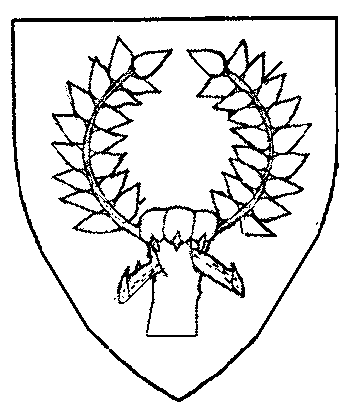
SCA Name Legal Name
Cecily Hobbs - Seneschal Lois Lane
Aziz the Camel Dealer - marshal Miles Archer
Genevieve Betsy Ross
thorgeirr hrafn Will Cody
Katherine Cooke - Herald Jo March
|
|
We the undersigned members and officers of the Shire of Littelton affirm that we approve of the submission of the branch name Littleton and device, Argent, an anchor and on a chief gules three laurel wreaths argent, pictured below.
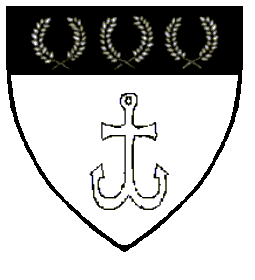
SCA Name Legal Name
Brand the Dark - Seneschal William Marshall
Elisabeth de Paris - Exchequer Anne Boleyn
Eirikr Haakonsson - marshal Richard Lion
Teleri verch Morgant Mary Stewart
|
|
|
|
We the undersigned members and officers of the Canton of Goldale affirm that we approve of
the submission of the branch name Goldale.
SCA Name Legal Name
Guiseppe Verdani - Seneschal Joe Green
Tamara bat Shlomo Maggie Mead
Ruadhan Ruadh - chronicler Alan A. Dale
Regina the Washerwoman - herald Barbara Allen
Fujiwara Jiro - archery marshal Ed Equine
|
|
|
Lady Marya Kargashina
lions-blood@antir.sca.org |
August 31, 2004
Send thy comments here: | Jessica Smith-Carlock
5114 SE Holgate
Portland, OR 97206
503-772-0002
|
Commentary on this Letter will be due October 15, 2004.
(Send comments to Lions Blood Herald, information at top of this page)
The September Lions Blood meeting will be held on Sunday, September 15th, 1pm, at the home of Teceangl Ounce: 11403 SE Hawthorne Blvd, Portland, OR. (503) 256-1891.
Directions:
From north of Portland take I-5 to I-205 through the city. Take exit 21B - Washington St./Stark St. (it's the exit right AFTER the I-84 west exit). Stay in the center lane. At Washington St. (Taco Bell) turn left, again stick to the center lanes. Turn right on SE 117th (there's a light) and follow it through to SE Hawthorne Blvd. on the right, one block this side of the flashing red light. Turn right (no other choice) and follow the street into the curve. 11403 is on the right side, sea foam green with roses in the yard. Park on the street or in the driveway. Teceangl's banner (Sable, seven mascles argent) should be displayed on the porch.
From south of Portland take I-5 to I-205 through the city. Exit on exit 20, Washington St./Stark St. Turn right at the light and stay in the middle lane. Turn right onto SE 117th Ave. (there's a light) and proceed to SE Hawthorne Blvd. (one block this side of the flashing red light). Turn right (no other choice) and follow the street down into the curve. 11403 is on the right side, sea foam green with roses in the yard. Park on the street or in the driveway. Teceangl's banner (Sable, seven mascles argent) should be displayed on the porch.
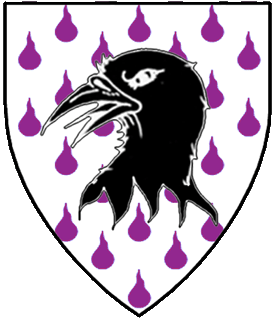
Greetings from Lions Blood.
CORRECTION
The emblazon for 2. Ælfflæd Ælfgaresdohtor was omitted from the July IL. Her blazon is Gules, a hare sejant contourny Or.
МАРЫА
КАРГАШИНА (Marya)
The June meeting was held on July 11th. Attending were Marya Lions Blood, Cathy, Ciaran Löwenmähne, Teceangl Ounce, Richenda Boar, Juliana Siren, Meadhbha Dragon's Mist and Earc Mountain Edge.
The following have been sent to Laurel on the July 2004 An Tir Letter of Intent:
| Adrienne Barclay of Dunnottar | Name and Device, New |
| Or, a mullet of eight points four greater and four lesser purpure within thistles in annulo proper.
|
| Ays,e al-Zahra' | Name, New |
|
Chinua Temur
Change from Khulan the Dark | Name Change, Resubmission to Laurel |
|
| Garan Darkwolf of Blackhelm | Device, Change |
| Per bend Or and sable, a bend counterchanged azure and argent between two wolf paw prints counterchanged
|
| Guerin Valletort de Harfleur | Name and Device, New |
| Azure, on a chevron argent escallops sable all within a bordure invected argent.
|
| Isabella Feliciano da Fiume | Device, New |
| Per bend sable and argent, an increscent bendwise argent and an arrow bendwise sinister inverted proper headed sable fletched purpure
|
| Karin Ollesdotter av Augvaldsnes | Name and Device, New |
| Or, semy of birch leaves vert, a seahorse gules
|
| Meadhbha inghean Bhrain Mhuilleóir | Badge, New |
| (Fieldless) A Celtic cross purpure
|
| Magnús Óláfsson | Name, New |
|
| Myfanwy Glanmorfa | Name and Device, New |
| Per fess azure and vert, a fess wavy cotised wavy argent
|
| Ninian of Warwick | Name, New |
|
| Raffe Ó Donnabháin | Device, Resubmission to Laurel |
| Per fess nebuly vert and sable, in chief three fir trees eradicated and in base a wolf's head erased Or
|
| Tir Righ, Principality of, for Order of the Hafoc | Order Name and Badge, New |
| (Fieldless) A hawk striking to sinister erminois
|
The following have been returned for further work:
| Ays,e al-Zahra | Device |
Gules, on a pale nebuly sable between in chief two fleurs-de-lys in base a fleur-de-lys Or and overall an elephant's head cabossed argent armed Or.
This was returned for violation of RfS VIII.2. Armorial Contrast. The pale gules cannot be placed on a sable field.
|
| Duibheasa ingean Bhrain | Name |
There is conflict with Dub Essa ingen uí Briain - October of 1998 (via Ansteorra).
|
| Fj{o,}rleif Hrafnasól | Name and Device |
Per Fess Or and gules, a demi-sun issuant from chief sable from chief sable, and a demi-sun issuant from base or.
The name was returned for the byname not being plausibly constructed, and the device for lack of a name we could send it to Laurel with.
|
| Giovanni della Rosa | Device |
Ermine, a wolf rampant regardant Or maintaining in dexter paw a sword enwreathed with rose all within a border sable semy of roses Or
Returned for violation of RfS VIII.2. for placing an Or charge on an ermine field.
|
| Gynna Victorsdottir | Device |
Argent, on a pile throughout argent fimbriated vert between two periwinkle blossoms azure seeded Or a cat couchant guardant contourny sable
The fimbriated argent-on-argent pile is not identifiable. This item had been pended from the March IL.
|
| Katherine Wells | Name, Device and Badge |
Per bend purpure and sable, a jester's cap within a bordure argent
(Fieldless) A jester's cap sable.
The name is in conflict with Kateline atte Well - November of 2003 (via Æthelmearc), therefore all three items must be returned. The relevant Rule is in the RfS, section V.1.a.ii.(b).
|
| Magnus Olafsson | Device |
Gules, a crab disjointed argent within a border argent
The disjointing renders the crab unidentifiable; also, the gules was depicted in a non-heraldic magenta.
|
| Ninian of Warwick | Device |
Purpure, an owl Or within a bordure argent.
Conflict with Karl Teransson - November of 2000 (via Atenveldt): Per bend sinister azure and gules, an owl close affronty Or and a bordure argent. The only CD is for changing the field, as an owl close either direction and an owl affronty are all identical for purposes of conflict:
An owl affronty has been ruled to be equivalent to an owl close (and thus therefore, also to an owl close and contourny): "The 'blobbiness' of the owl's body, and the fact that the owl is guardant in all cases, leads me to conclude that there is no visual difference for turning the owl's body affronty" (LoAR of October 1992). Therefore there is no meaningful posture difference for turning the charges in chief (which are contourny) to this owl affronty, as the owl affronty is equivalent to an owl contourny. [Ambra Biancospina, 04/02, R-Middle]
|
| Steinn Vikingsson | Device |
Azure, a dolphin naiant embowed argent between in pale a coronet and an anchor Or.
This was returned for conflict with Patricia Whale - February of 1997 (via Atenveldt): Azure, a narwhal argent between a demi-sun issuant from chief and another issuant from base Or. As depicted the dolphin was the primary between secondary charges so the only CD could come from changing type of the group of secondaries. The dolphin gets no difference from a narwhal because it was not an heraldic dolphin:
[Per fess wavy argent and azure, a natural dolphin naiant azure] Conflict with ... Argent, a whale naiant azure. There is a CD for the field, but nothing for the forced change in position on the field and nothing for the difference between a natural dolphin and a whale. [Eirikr inn kengr, 03/00, R-An Tir]
|
| 1. Áedán mac Suibne |
Three Mountains |
New Alternate Name
Khalid al-Nasiri |
|
The submitter will not accept major changes, cares most about language/culture (13th-14th century Mamluk), desires a male name, wants his name to be changed to be authentic for "Bahri Mamluk 1293-1341 in service of al-Nasir Muhammad," and will accept a holding name. His current name was registered in February of 2001.
Khalid is found in Da'ud ibn Auda's Period Arabic Names and Naming Practices (http://www.sca.org/heraldry/laurel/names/arabic-naming2.htm). Kalid is found in the section about isms (given names). The submitter asserts that, upon emancipation, mamluks commonly converted to Islam and took Islamic names.
al-Nasiri is a nisba (byname or cognomen) based on the name of the Mamluk Sultan. The submitter asserts that a common Mamluk naming practice was to, when an Islamic name was adopted, create a nisba to show the person's relationship to the lord the person served. Sultans using the byname al-Nasiri can be found in Robert Irwin's The Middle East in the Middle Ages: The Early Mamluk Sultanate 1250-1382. Arghun al-Nasiri served as Sultan on three occasions, the most recent between 1310 and 1341. Copies of the documentation were included.
|
| 2. Aleassandra de' Medici |
Blatha An Oir |
Name, New |
|
The submitter will accept any changes, cares most about language/culture (unspecified), desires a female name, wants name changed to be authentic for unspecified time period, and will accept a holding name.
Aleassandra can be found in Arval Benicouer's Feminine Given Names from the Online Castasto of Florence of 1427 (http://www.s-gabriel.org/names/arval/catasto). This Web site cites three women with this name. de' is a preposition indicating membership in a family.
Medici can be found in David Herlihi, R. Litchfield and A. Molho's Florentine Renaissance Resources: Online Tratte of Office Holders 1282-1532. This Web site cites 1032 people with this surname in Florence. No copies of the documentation were included.
|
| 3. Alessandra de Montefeltro |
|
Name and Device, New |
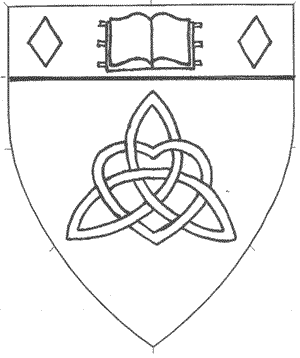 |
Azure, a heart voided and a triskele interlaced on a chief Or an open book between two lozenges Gules.
The submitter will accept any changes, cares most about language/culture (unspecified), desires a female name, wants name changed to be authentic for 16th century Florence, Italy, and will accept a holding name.
Alessandra is found in Rhian Lyth of Blackmoor Vale's Italian Renaissance Women's Names (http://www.panix/~mittle/names/, under the Medieval Names Archive, Names in Specific Cultures: Italian Names). Alessandra is also found in Other Women's Voices: Translations of Women's Writing before 1700 (http://home.infionline.net/~ddisse/strozzi.html) This Web site translates several letters written by Alessandra Macinghi Strozzi (1407/8-1471).
de Montefeltro can be found in Margaret Aston's The Panorama of the Renaissance. This reference work cites Federigo da Montefeltro as duke in Italy who lived between 1422 and 1482. de Montefeltro is also found in the Catholic Encyclopedia (http://www.newadvent.org/cathen/10528a.htm). This source provides evidence of a diocese called Montefeltro. The first known bishop was in 826. The earliest citation was for Mona Feretri; no dates were provided for the diocese name change to Montefeltro. Copies were provided for all documentation.
This is a heart voided interlaced with triquetra, not a triskele.
(Note -- URL typo corrected by Blue Anchor, 12/16/04)
|
| 4. Arthus De Winterton |
Blatha An Oir |
Name, New |
|
The submitter will accept any changes, doesn't care about meaning/sound/language/culture, desires a male name, wants name changed to be authentic for 12th to 16th century French/English, and will accept a holding name.
Arthus is found in Albert Dauzat, Dictionnaire Etymologique des Noms de Famille et des Prénoms de France. (page 13.)
Winterton is found in P.H. Reaney and R. M. Wilson, A Dictionary of English Surnames (page 496). Reaney and Wilson date this name to 1066.
|
| 5. Crínóc Dhonn |
Aquaterra |
Name and Device, New |
 |
Argent, an owl and an orle gules.
Crínóc is found in Mari Elspeth nic Bryan's Index of Names in Irish Annals: Descriptive Bynames Found in Feminine Names. The name is dated to 1051-1100.
Dhonn is found in the Oxford Pocket Irish Dictionary, s.n. donn. The dictionary defines donn as meaning brown. Evidence of using hair color epithets can also be found in Mari Elspeth nic Bryan's Index of Names in Irish Annals: Descriptive Bynames Found in Feminine Names. Copies of all documentation were included.
|
| 6. Crínóc Dhonn |
Aquaterra |
Badge, New |
 |
(Fieldless) Three owls conjoined gules maintaining a needle fesswise argent.
Her name appears above.
|
| 7. Dalibor K_ivokl_tsky |
Lions Gate |
Name and Device, New |
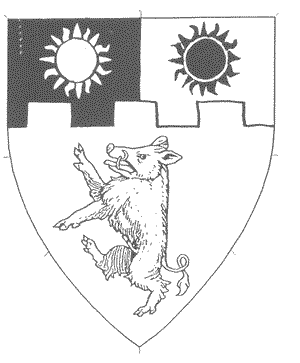 |
(Note from Blue Anchor: Some characters in this byname didn't make it over the Net in one piece, apparently. I'll fix this as soon as I find out what they are supposed to be.)
Vert, a chief embattled, per pale sable and argent, two suns in splendor counterchanged, a boar rampant argent
The submitter will not accept any changes, cares most about language/culture (14th century Bohemian), desires a male name, wants name changed to be authentic for 14th century Bohemian, and will accept a holding name.
Dalibor is, according to the submitter, "a common medieval Czech name." The submitter asserts that a tower in Prague Castle (built in 1496) is called "Daliborka" after the first prisoner held there. Dalibor is also listed as a variant of Dalebor in Paul Wickenden's Dictionary of Period Russian Names (http://www.sca.org/heraldry/paul/d.html), dated to 1177.
K_ivokl_tsky is named for a castle located in the Berounka valley, located 40 kilometers west of Prague (http://www.allpraha.com/?page=resourcedetail&category=100072&resource=21272&resourcename=Krivoklat%20Castle and http://www.cs-center.org/krivoklat). The castle construction occurred from the 12th through 16th centuries. No copies of the documentation were included.
|
| 8. Denis de Loyer |
Porte de l'Eau |
Badge, New |
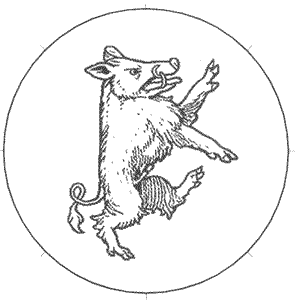 |
(Fieldless) A boar rampant to sinister Or
The submitter's name was registered in June of 1994.
|
| 9. Earnrokke, Shire of |
|
Branch Name, New |
|
The submitter will accept any changes, cares most about meaning (Old English for Eagle Rock), and does not want the name changed to be authentic.
Earn is found in A.H. Smith's English Place Name Elements (s.n. unknown). Rokke is found in A.H. Smith's English Place Name Elements (s.n. unknown). No copies of the documentation were provided; however, copies of a personal correspondence with Black Lion providing the A.H. Smith information was.
|
| 10. Edward the Smith |
Glymm Mere |
Name and Device, New |
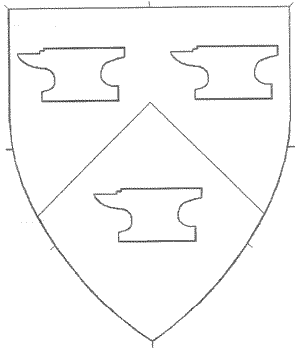 |
Per chevron azure and gules, three anvils argent
The submitter will accept any changes, does not care about meaning/sound/language/culture, doesn't care about the name's gender, and will accept a holding name.
Edward is found in E.G. Withycombe, Oxford Dictionary of Christian Names. (s.n. Edward). Withycombe dates Edwardus to 1187 and the name of six English kings in period.
The Smith is found in P.H. Reaney and R. M. Wilson, A Dictionary of English Surnames (s.n. Smith). Reaney and Wilson dates Aelfword the Smith to 1100 and William le Smyth to 1275.
|
| 11. Grimwithshire |
|
Branch Name, New |
|
The submitter will accept any changes, cares most about meaning (Old English for the wood haunted by a ghost), and wants name changed to be authentic for 10th to 12th century England (specifically Yorkshire Dales. Arthur Mee in The Kings England - Yorkshire West Riding cites a location called Grimsworth valley. A locative, of Grimwith, occurs between 1630 and 1680. Other locatives, Grimwith Fell and Grimwith Beck, are also found. A Grimwith reservoir was constructed in Victorian times, possibly on the location of a town of the name of Grimwith.
|
| 12. Juliana Felicita Boccaccio |
|
Device, New |
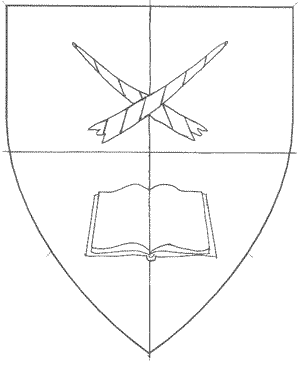 |
Quarterly gules and azure in pale two crossed unicorn horns and an open book or
The submitter's name was registered in August of 1998.
|
| 13. Kateryne O'Neile |
Shittimwoode |
Name and Device, New |
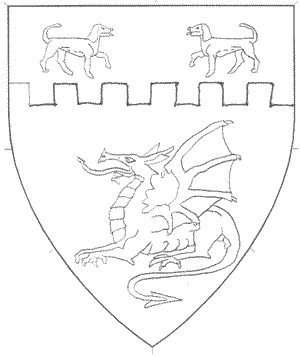 |
Or a dragon couchant sable and on a chief embattled azure two dogs passant respectant argent
The submitter will not accept any changes, does not care about meaning/sound/language/culture, desires a female name, wants name changed to be authentic for time and language/culture (unspecified), and will accept a holding name.
The submitter provided documentation from the Academy of St. Gabriel, report 2812. The Academy documents Kateryne from Talan Gwynek's "Feminine Given Names in A Dictionary of English Surnames"
(http://www.s-gabriel.org/names/talan/reaney). This form of the name dates to the 16th century.
The Academy also documents O'Neile as an Anglo-Irish name to the 16th century in Heather Rose Jones' Fourteenth to Sixteenth Century Irish Names and Naming Practices (http://www.s-gabriel.org/names/tangwystyl/lateirish) and C. L'Estrange Ewen A History of Surnames of the British Isles. The Academy indicated that this form of the name would have plausibly been used by a 16th century worman.
|
14. Lions Gate, Barony of
Order of the Lion's Fang |
|
Order Name, New |
|
The submitter will accept only minor changes, cares most about sound, and does not want name changed to be authentic. The branch name was registered in September of 1986.
"Order of the Lion's X" should be grandfathered to the Barony, as the Order of the Lion's Claw was registered to them in April of 1981.
The Barony provides evidence of the word "fang" being used with a lion in Shakespeare's King Henry IV, part II, Act IV, Scene I - Hastings: "So that his power, like to a fangless lion, May offer, but not hold." Copies of the documentation were included.
|
14. Lions Gate, Barony of
Order of the Lion's Mark |
|
Order Name, New |
|
The submitter will accept only minor changes, cares most about sound, and does not want name changed to be authentic. The branch name was registered in September of 1986.
"Order of the Lion's X" should be grandfathered to the Barony, as the Order of the Lion's Claw was registered to them in April of 1981.
The Barony provides evidence of the word "mark" being used during period in Shakespeare's King Richard III, Act I, Scene III - Queen Margaret: "Sin, death, and hell have set their marks on him, And all their ministers attend on him." Copies of the documentation were included.
|
| 16. Missa Hendrich |
Madrone |
Name and Device, New |
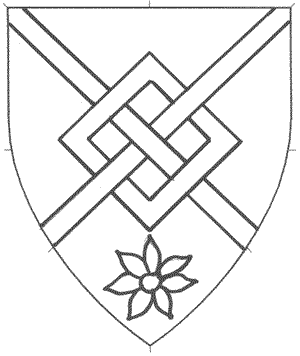 |
Azure a fret argent in base a daisy proper.
The submitter will accept any changes, cares most about sound, wants name changed to be authentic for 13th century, and will accept a holding name.
Missa can be found in P.H. Reaney and R. M. Wilson, A Dictionary of English Surnames (s.n. Binne, page 44).
Hendrich can be found P.H. Reaney and R. M. Wilson, A Dictionary of English Surnames (page 226).
The daisy is petaled argent and seeded Or.
|
| 17. Morgina atte Wodelonde |
Lyonsmarche |
Name and Device, New |
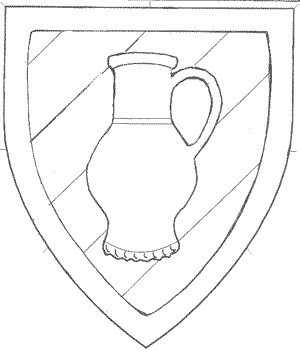 |
Bendy sinister argent and sable, a baluster jug within a border gules
The submitter will accept any changes, cares most about sound, desires a female name, does not want name changed to be authentic, and will accept a holding name.
Morgina is found in Nicolaa de Bracton's A Statistical Survey of Given Names in Essex Co., England, 1182-1272 (http://members.tripod.com/nicolaa5/articles/women.html)
atte Wodelonde is found in A.D. Mills, A Dictionary of English Place-Names (s.n. Woodland(s)). Mills dates Wodelande to 1244 and 1328. In addition, P.H. Reaney and R. M. Wilson in A Dictionary of English Surnames (s.n Woodland) dates Thomas atte Wodelond to 1327. The submitter provided evidence of this style of jug from Jaqueline Pearce and Alan Vince, A Dated Type-Series of London Medieval Pottery: Part 4: Surrey Whitewares, page 53.
|
| 18. Quentin Martel |
Shittimwoode |
Name and Device, New |
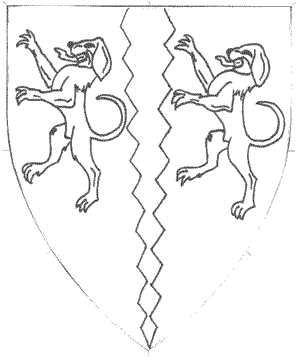 |
Gules, a pile indented Or between two dogs rampant argent
The submitter will not accept any changes, does not care about meaning/sound/language/culture, desires a male name, does not want name changed to be authentic, and will accept a holding name.
Quentin can be found in E.G. Withycombe, Oxford Dictionary of Christian Names. (s.n. Quentin). Withycombe states that the name was found in the 11th to 13th century and used in Scotland until the 17th century.
Martel can be found in P.H. Reaney and R. M. Wilson, A Dictionary of English Surnames (s.n. Martel). Reaney and Wilson dates Matellus to 1163-66 and 1187, and Martel to 1086 and 1148. Charles Bardsley, A Dictionary of English and Welsh Surnames dates Mertel and Martel to 1273, and Martell and Martyll to 1379.
|
| 19. Raven mac Uilliam mhic Fearchar |
Lions Gate |
Name and Device, New |
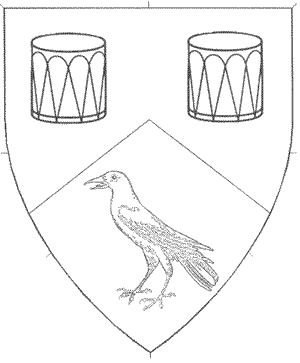 |
Per chevron sable and argent two drums and a raven close counterchanged
The submitter will accept only minor changes, cares most about language/culture (unspecified), desires a male name, wants name changed to be authentic for unspecified time and culture, and will accept a holding name.
Raven is documented from an Academy of St. Gabriel letter #1751. The Academy explains that the element Raven was derived from the Germanic Hraban-, as shown in the name Ravengerus. By 1007, the Academy finds evidence of Ravanus as a Latin form of the name Ravan and postulates that Raven was a plausible alternate spelling. The Academy also suggests that Raven can be derived from the Old Norse Hrafn as Rauen.
Uilliam is documented from an Academy of St. Gabriel letter #1581. The Academy is able to document the spelling Uilliam to the 14th or 15th century in Scotland using William Skene's Genealogies of the Highland Clans, Extracted from Ancient Gaelic Manuscripts" 1. Gaelic MS. Written circa A.D. 1450 with a Translation. However, the earliest date the Academy believes any spelling of Uilliam or William would have been used in England was the late 11th century and, in Scotland, the 12th century.
Fearchar is documented from an Academy of St. Gabriel letter #2332. The Academy documents Fearchar as a late period spelling of the name Ferchar, found in Donnchadh Ó Corráin and Mavis Courane's The Annals of Ulster (http://www.ucc.ie/celt/online/G100001) and Donnchadh Ó Corráin's Annals of Tigernach (http://www.ucc.ie/celt/online/G100002). Ferchar was used in Ireland through the 12th century. Copies of this documentation were provided.
|
| 20. Sibylla de Bade |
Aquaterra |
Name, New |
|
The submitter will accept only minor changes, cares most about language/culture (Norman), desires a female name, does not want name changed to be authentic, and will accept a holding name.
Sibylla can be found in William George Searle, Onomasticon Anglo-Saxonicum (page 416).
Bade is found in Eilert Ekwall, The Concise Oxford Dictionary of English Place-Names (s.n. Bath, page 29). Ekwall dates the name to a Domesday book. de is found at http://www.sca.org/heraldry/laurel/names/Rutland/locatives.htm.
|
| 21. William MacAndrew |
Lions Gate |
New Alternate Name
Uilliam mhic Fearchar Gille Aindrias |
|
The submitter will accept only minor changes, cares most about language/culture (unspecified), desires a male name, wants name changed to be authentic for unspecified time and culture, and will accept a holding name. His current name was registered in November of 1991.
Uilliam is documented from an Academy of St. Gabriel letter #1581. The Academy is able to document the spelling Uilliam to the 14th or 15th century in Scotland using William Skene's Genealogies of the Highland Clans, Extracted from Ancient Gaelic Manuscripts" 1. Gaelic MS. Written circa A.D. 1450 with a Translation. However, the earliest date the Academy believes any spelling of Uilliam or William would have been used in England was the late 11th century and, in Scotland, the 12th century.
Fearchar is documented from an Academy of St. Gabriel letter #2332. The Academy documents Fearchar as a late period spelling of the name Ferchar, found in Donnchadh Ó Corráin and Mavis Courane's The Annals of Ulster (http://www.ucc.ie/celt/online/G100001) and Donnchadh Ó Corráin's Annals of Tigernach (http://www.ucc.ie/celt/online/G100002). Ferchar was used in Ireland through the 12th century.
Gille is documented from an Academy of St. Gabriel letter #1068. The Academy documents Gille as a name element meaning "servant of." The Academy cites Gille Moire (servant of Mary) from Donnchadh Ó Corrain & Fidelma Maguire, Irish Names and Effric neyn Kenyeoch vc Ralte A Simple Guide to Constructing 12th Century Scottish Bynames. (http://www.stanford.edu/~skrossa/medievalscotland/simple_sc_gaelic_names_12.html).
Aindrias is documented from an Academy of St. Gabriel letter #1351. The Academy derives the spelling Aindrias from the 12th century bishop Andreas clericus Moraviensis' Latin name. Other early forms of the name, Aindrea and Anndra, were found by the Academy in George F. Black, The Surnames of Scotland. (s.n. MacMichael, Michalbegson, Andrew) and Effric neyn Kenyeoch vc Ralte A Simple Guide to Constructing 12th Century Scottish Bynames. Copies of this documentation were provided.
|
| 22. William the Mariner |
Seagirt |
New Alternate Name
Uilliam mac Aillén vhic Séamus |
|
The submitter will accept any changes, cares most about meaning (William, son of Alan, grandson of James), desires a male name, and wants name changed to be authentic for Scottish Gaelic. His current name was registered in March of 1987.
Uiliiam can be found in Donnchadh Ó Corrain & Fidelma Maguire, Irish Names (s.n. Uilliam, page 175). Ó Corrain and Maguire state that the Normans brought the name to England during the Conquest from which it spread to Ireland.
Séamus can be found in Donnchadh Ó Corrain & Fidelma Maguire, Irish Names (s.n. Séamus, page 163). Ó Corrain and Maguire states that this is a common name among Anglo-Norman settlers and was adopted by the Irish.
Aillén can be found in Donald Whyte Scottish Forenames (s.n. Allen, page 25). Whyte states that Allen is the name of a Welsh and Breton saint. The name was brought to England with Alan, Earl of Brittany, who was given lands by William the Conquerer. Copies of this documentation were not provided.
|
| 23. William the Mariner |
Seagirt |
Badge, Resubmission |
 |
(Fieldless) An anchor argent enfiling a coronet bendwise sinister Or pearled gules.
The An Tir Order of Precedence shows that William was made a Court Baron on January 13, 2001.
The submitter's previous badge, (Fieldless) An anchor fouled of its cable argent enfiling a coronet bendwise sinister Or pearled argent, was returned in July 2003 at Laurel for identifiability and non-period style. The previous submission contained too much overlap between the coronet and the anchor and its cable. In addition, the position of the coronet was neither bendwise sinister nor palewise. Finally, the argent pearls on the coronet had no contrast with the argent anchor. This resubmission addresses these problems.
|
In service to the An Tir College of Heralds,






















